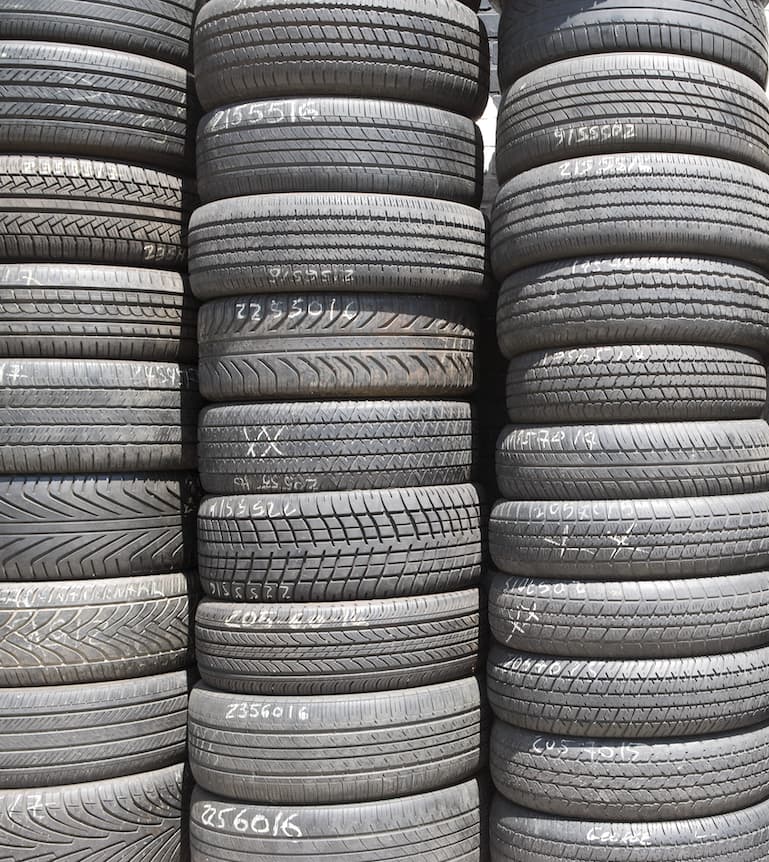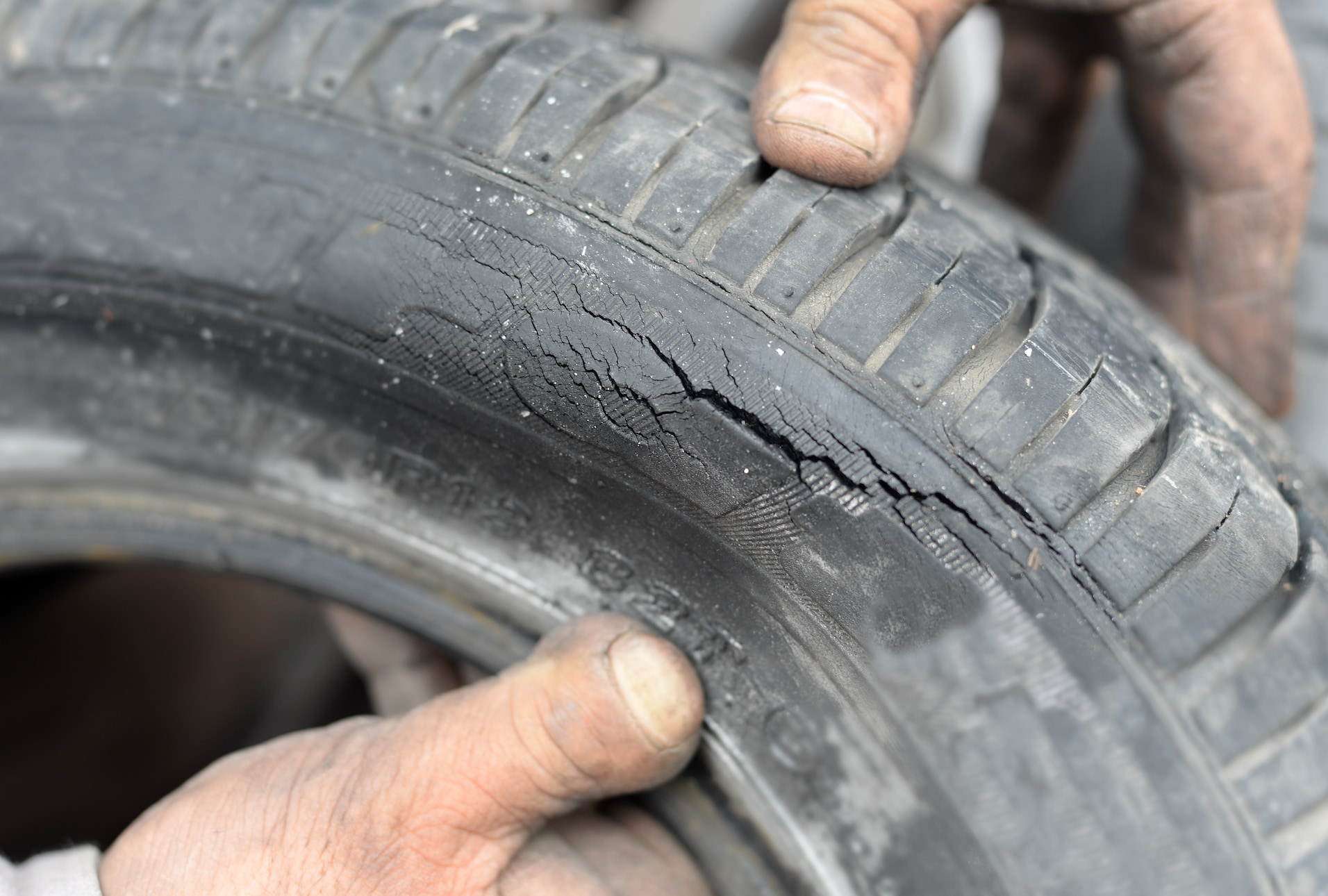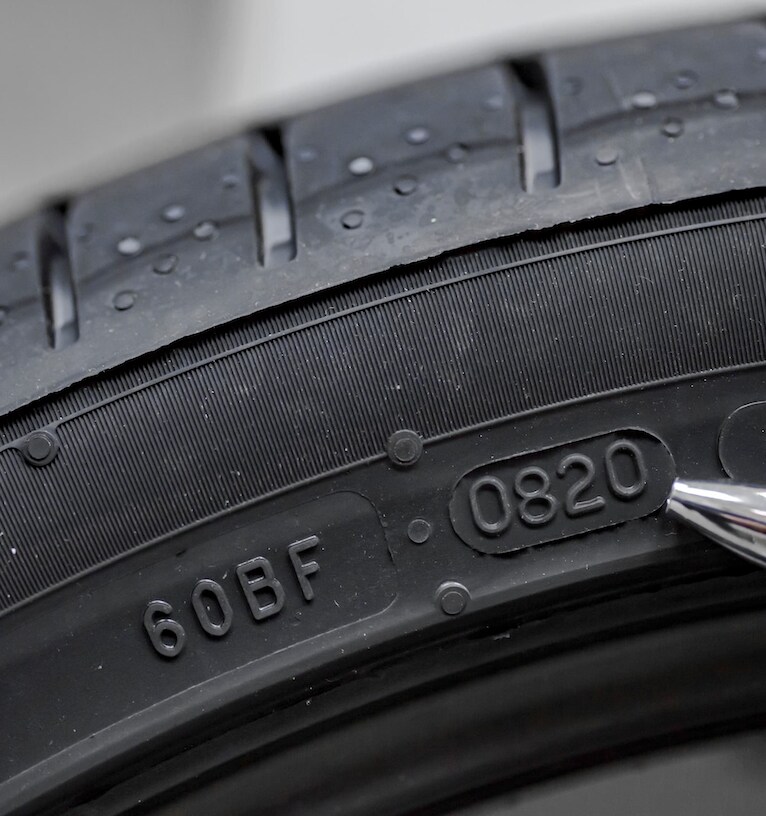Where the Rubber meets the Road
The most important safety feature on your car is its tires. Those several inches of rubber and tread can mean the difference between safety and calamity. Most people buy new tires every four or five years after the tread wears down on their current set. For those who own classic cars or high-performance sports cars that don't see a lot of mileage on the road, sometimes the same set of tires might last eight to ten years, but is that safe? Let's take a look at how old, and more importantly, how dangerous your tires might be.

We've all used "the penny" test to check our tread ware
That's when you insert a penny into the tread to see if you can see the top of Lincoln's head. In you can, it's time for new tires. But how old are your tires? Old tires can be extremely dangerous even if they still have tread.

Never buy Used Tires
If you remember one thing from this article, remember to never buy used tires. You have no idea how old the tires are or how they have been used. The small amount of money you might save is not worth your life or the lives of your family. Just don't do it. Don't drive on aging tires, even if they have spent little time on the road. The complex rubber compounds in tires today deteriorate over time, no matter how much tread is left.
Once tires are made, factors such as radiation from sunlight and ozone in the atmosphere work to slowly destroy rubber compounds. This isn't a problem if you drive 12,000 to 15,000 miles per year and replace your tires every four or five years. But, if you drive a lot less than that, aging tires can become a problem. If you have a classic car or a sports car that spends most of its time in the garage, you don't generally think about the age of the tires. But tires dry out over time, and develop hairline cracks in the sidewalls, a sure sign that they are at the end of their useful life.
If you buy a used car, you know little if anything about the age of the tires. You figure that if they still have good tread all is well. By the same token, spare tires usually just sit in the trunk and are seldom if ever used, but the rubber still gets brittle with age.
When to Retire a Tire
Over time, cracks begin to develop in a tire's rubber, whether you drive the car or not. This cracking can cause the steel belts in the tread to separate causing catastrophic tire failure. According to the National Highway Traffic Safety Administration (NHTSA), there are no specific guidelines for aging tires and defers to automakers and tire companies. Car manufacturers such as Mercedes-Benz and Ford suggest that you replace tires after six years of use, no matter how much tread may be left on the tires. Tire manufacturers Michelin and Continental tell us that a tire can last up to ten years so long as you get annual tire inspections.

According to the Rubber Manufacturers Association, there is no real way to give tires an expiration date. Factors such as conditions of use, storage, heat, and tires that are under-inflated, all act to change the parameters of tire life. We know that tires age quicker in warmer climates where they are subjected to more sunlight and coastal climates.
The other big factor is under-inflated tires. A tire wears out sooner if it is under-inflated. Check your tire pressure often. If you only drive your car on the weekend, the tires will wear differently than a car that is driven every day. Bottom line, check the sticker inside the driver's side door jamb for proper tire inflation numbers and keep your tires inflated properly.
Are New Tires New?
When you purchase tires from a tire center, how do you know if the tires are new? If a tire sits in a tire shop for months, the rubber is still aging, right? To determine the age of a tire, check the sidewall of the tire. See all those numbers and letters? They act as a code that will tell you all about the tire. The Department of Transportation provides a four-digit code that determines when the tire was manufactured.
- The first two numbers represent the week that the tire was made
- The second two represent the year.

How to Check the Size of your Tires
The tire size that is branded on the sidewall tells you a lot about the tire's intended purpose, its dimensions, high speed durability, and load capacity. As an example, let's use a tire that is branded as 225/50R16 to break down what all that means.The tire size that is branded on the sidewall tells you a lot about the tire's intended purpose, its dimensions, high speed durability, and load capacity.
Service Type
As an example, let's use a tire that is branded as 225/50R16 to break down what all that means. Looking at the naming convention for a tire begins by telling you what type of vehicle the tire is meant for and what service it is designed for. Here's what those first letters and numbers on the tire brand stand for according to the experts at Tire Rack.
Check for Aging
Sadly, there are no "wrinkle creams" for tires. It's important to check your tires frequently for signs of aging. Whenever you check to see if your tires are properly inflated, do a walk around of your vehicle and check your tires for signs of aging. Look for hairline cracks in the sidewall. Look at the tread to see how the tire is aging. If the tread is wearing more towards the inside of the tire, it is time for a front-end alignment. Your Lithia dealer can handle that for you.
If you notice unusual vibration from the tires at certain speeds, it may indicate aging problems as well. Check for any odd bulges you might see on the tire. This can occur when:
- Air gets between the lining of the tire and the outer rubber
- Result of hitting a curb or a pothole.
Tires usually come with a tread-wear warranty, which is a good indicator of the tire's lifespan for miles driven. Remember, it is better to replace aging tires early than run the risk of driving on dangerous tires.
Let Lithia Help
Your tires have the greatest effect on the way your car handles and brakes. Remember that your tires are the most important safety feature on your vehicle. At Lithia Motors we sell quality tires by major name brands. If you're worried about your tires, bring your car in to the Lithia dealer near you and let us take a look. We also handle tire rotation, wheel alignment, the whole enchilada.


